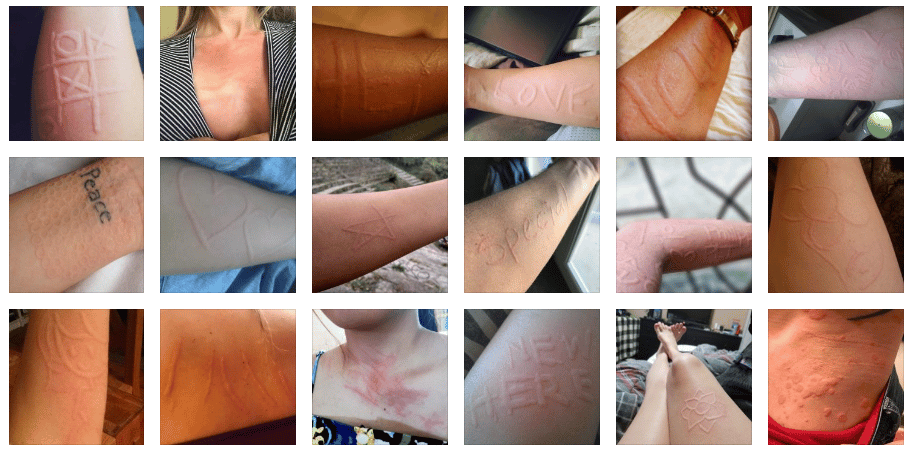Are you suffering from itchy skin where red lines appear after scratching? Dermatographia is a condition that causes raised welts after the skin is scratched, affecting between 2-5% of the general population. For those dealing with the bothersome itchiness of dermatographia, controlling symptoms is a priority.
While there’s no cure for dermatographia, diet can play a significant role in controlling its symptoms. Understanding the foods that trigger itchy skin can help you manage the condition better and finding treatment options that work for you. Let’s explore what foods you should avoid to minimize your symptoms.
1. Raw Fruits and Vegetables Can Cause Itchy Skin
Raw fruits and vegetables are typically associated with a healthy diet, but for people with oral allergy syndrome, or chronic urticaria, they can be a trigger for itchy skin. This condition occurs when the immune system reacts to proteins in raw fruits and vegetables that resemble pollen proteins.
For individuals with this condition, eating raw fruits and vegetables can cause itching in the mouth, throat, or face. Cooking these foods often solves the problem because heat distorts the proteins, making them less recognizable to the immune system.
Common Trigger Fruits and Vegetables:
| Fruits | Vegetables |
|---|---|
| Apples | Carrots |
| Peaches | Celery |
| Cherries | Tomatoes |
| Kiwis | Potatoes |
For more on symptoms of dermatographia, visit our common symptoms page.
2. Soy: A Common Allergen for Dermatographia Patients
Soy is a common allergen, especially for children, but it can also affect adults with dermatographia. Soy is found in foods like tofu, edamame, tempeh, and miso. For those allergic, soy can trigger skin inflammation, including atopic dermatitis, leading to redness and itching.
- Soy-related allergies are particularly common in infants, but some adults can also experience skin reactions. For a full list of soy-based products to avoid, see Mayo Clinic’s allergy resources.
3. Peanuts: A Serious Food Trigger
Peanut allergies are one of the most common and dangerous food allergies, especially in the U.S. About 1 in 50 American children have peanut allergies, and the proteins in peanuts—arachin and conarachin—can cause severe immune responses, including skin inflammation, digestive issues, and anaphylaxis.
If you have dermatographia, be cautious of peanuts as they can trigger itching, swelling, and hives. Always check food labels and avoid cross-contamination in foods. For more information on peanut allergies, see Food Allergy Research & Education (FARE).
4. Wheat and Gluten Sensitivity
Many people with dermatographia also experience wheat allergies or gluten sensitivity. Wheat is found in common foods like bread, pasta, and crackers. An allergy or sensitivity to wheat can cause itchy skin, hives, and digestive issues.

People with wheat allergies need to avoid not just bread and pasta but also foods like soy sauce, hot dogs, and ice cream, which may contain hidden wheat. For a gluten-free diet, consider alternatives like rice or quinoa. You can find more dietary tips for managing skin conditions in our detox.
Common Gluten and Wheat Substitutes:
| Gluten/Wheat Foods | Gluten-Free Substitutes |
|---|---|
| Bread | Rice |
| Pasta | Quinoa |
| Crackers | Gluten-free crackers |
5. Sesame Allergies and Dermatographia
Sesame allergies may not be as well-known as peanut allergies, but they are just as dangerous. Sesame can cause severe allergic reactions, including anaphylaxis. Skin reactions such as hives and itching are common symptoms.
Sesame is often found in foods like hummus, sesame oil, and baked goods. Always check ingredient lists when eating out, and avoid foods that contain sesame to prevent flare-ups. Learn more about sesame allergies from Johns Hopkins Medicine.
6. Tree Nuts and Their Role in Skin Reactions
Tree nuts, including almonds, cashews, and walnuts, can be problematic for those with dermatographia. Even small amounts can cause skin reactions like redness, itching, and swelling.
Tree nuts contain proteins that are resistant to heat and digestion, making them harder for the immune system to tolerate. To avoid reactions, try using seed-based products like sunflower butter as substitutes.
7. Shellfish: A Risky Allergen
Shellfish, including shrimp, lobster, and crabs, contain tropomyosin, a protein that commonly triggers allergic reactions. Mild reactions can cause itchy skin and hives, while severe reactions can lead to anaphylaxis.

If you’re allergic to shellfish, it’s best to avoid all types of shellfish and related dishes. Make sure to ask about ingredients when dining out to avoid accidental exposure. For more on shellfish allergies, see American College of Allergy, Asthma & Immunology (ACAAI).
8. Milk Allergies vs. Lactose Intolerance
Milk allergies occur when the immune system reacts to casein and whey, proteins found in milk. This is different from lactose intolerance, which is a digestive issue. People with milk allergies may experience hives, itching, or swelling after consuming dairy products.
To manage symptoms, avoid milk-based foods like cheese, yogurt, and butter. For more information on milk allergies, check out KidsHealth.
9. The Link Between Alcohol and Skin
While some people believe alcohol has health benefits, it’s often problematic for those with autoimmune conditions like dermatographia. Alcohol can amplify stress, weaken the immune system, and cause inflammation, leading to skin reactions.
If you consume alcohol, opt for low-sugar options and monitor your reactions. It’s important to know your body and limit alcohol if it triggers symptoms.
Conclusion: Taking Control Through Diet
If you suffer from dermatographia, diet is a powerful tool for controlling symptoms. By avoiding trigger foods like soy, peanuts, shellfish, and gluten, and focusing on nutrient-dense foods like vegetables, fruits, and fish, you can manage the itching, swelling, and redness.
Making dietary changes can have a noticeable effect within days. Start by eliminating potential triggers from your diet and see how your skin responds. For more dietary tips and symptom management, visit Dermatographia.com and explore our resources on common symptoms, causes, and treatments.



So many foods make my skin itchy. Thanks for sharing this. I am going to try an elimination diet and see if that helps for 30 days.